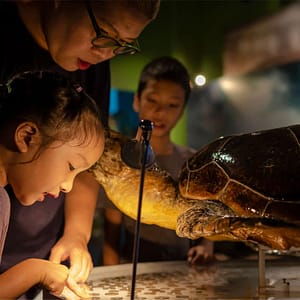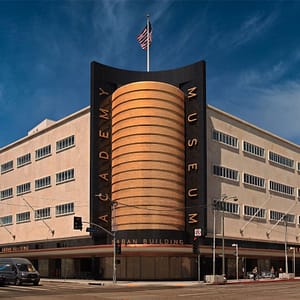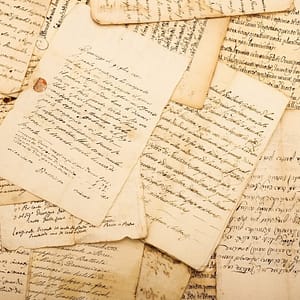Supporting Communities with Less-Commonly Translated Languages
While Spanish and Chinese are widely translated by cultural institutions across the U.S., less widely encountered languages are also being used by museums and other organizations to meet the needs of local communities and complement exhibit content. In this article, we share some examples.
Translating Into Somali and Hmong in the Twin Cities
Two major Minneapolis art museums, the Walker Art Center and the Minneapolis Institute of Art (MIA), reach local communities with the Somali and Hmong languages. Located in the Lowry Hill neighborhood of Minneapolis, the Walker is known for its acclaimed collection of visual, performing, and media arts. In the nearby Fair Oaks neighborhood, MIA features a permanent collection of world-famous work spanning 20,000 years and representing the world’s diverse cultures across six continents. Both the Walker and the MIA serve as cultural anchors in their communities, with missions focused on bringing art into the lives of local residents.
The Twin Cities area has linguistic diversity unlike many other metro areas around the U.S. More than 203,000 Minnesotans are Spanish speakers. But after Spanish, Somali is the second most common language spoken at home, by 74,000 people. Described as the cultural hub of the Somali diaspora, the Twin Cities contains one of the largest Somali communities in the world outside East Africa.
In third place, the Hmong language is spoken by approximately 59,000 Minnesotans. A distinct ethnic group from China and Southeast Asia, the Hmong began arriving in Minnesota in the 1970s after being displaced from Laos by war. Today, there are more than 66,000 Hmong in Minnesota, and the Twin Cities metro area is home to the largest concentration of Hmong in America. As with many immigrant groups, language skills vary significantly across generations.
The Walker delivers nationally recognized educational programs that serve schools, families, and adults in the Twin Cities and across Minnesota. As part of this effort, the museum develops art kits and educational resources in multiple languages, including Spanish, Hmong, and Somali. The Walker’s translated ads encourage visitors to “explore the art inside” and raise awareness about free Thursdays. Family activity guides encourage kids to explore the sculpture garden and help young visitors respond to exhibitions through writing or drawing.
MIA also aims to make offerings accessible and inclusive by translating tour group guidelines and signage into Somali and Hmong. While rare languages are often selected for translation to engage local communities, sometimes they are chosen to support exhibit content. One interesting example is MIA’s 2019 exhibit Artists Respond: American Art and the Vietnam War, 1965-1975. Organized by the Smithsonian American Art Museum, the exhibit showcased visionary and provocative artists from the Vietnam war years. To complement those works, MIA assembled a related exhibit featuring artists of Southeast Asian descent whose lives were dramatically affected by the war. In order to support the many Minnesotans who were impacted by the war, the wall labels were translated into Hmong and Vietnamese, and the museum waived the admission fee for visitors of Southeast Asian heritage.
Translating Into Marshallese at Crystal Bridges
Since its opening in 2011, Crystal Bridges Museum of Art has quickly become one of America’s top destination museums, housing a permanent collection of American masterworks from the colonial era to modern day and showcasing touring collections from national institutions. Located in Bentonville, Arkansas, the museum welcomes all to celebrate the American spirit in a setting that unites the power of art with the beauty of nature. To support this mission and welcome members of local communities, Crystal Bridges translates select materials into Spanish and Marshallese (a Micronesian language also known as Ebon).
The Marshallese are a small immigrant population in the U.S., hailing from the Marshall Islands, which lie north of the equator in the central Pacific. Many Marshallese have been emigrating from their archipelago to the Ozarks since the 80s, fleeing the destructive effects of climate change and the aftermath of U.S. nuclear weapons testing during the Cold War. Under the 1986 Compact of Free Association, the U.S. permitted the Marshallese to live, travel, and work in the country as “legal non-immigrants” in return for the U.S. maintaining military bases on the islands. Arkansas is now home to the largest population of Marshallese in the continental United States. In this small, close-knit population, many of the older generations do not speak English well and rely on children and grandchildren to translate.
Crystal Bridges offers frequent community events and programming, including family days, which are free, outdoor events that bring households together for artmaking, music, and storytelling. To make the events welcoming and accessible to all, Crystal Bridges translates family day copy into the Marshallese language, creating an inclusive environment for all visitors.
Get in Touch!
Reach out to discuss your next translation project with a member of our team.
Translating Basquiat Into Haitian Creole
Another example of translation supporting exhibition content is the Museum of Fine Arts, Boston’s exhibition Writing the Future: Basquiat and the Hip-Hop Generation. Launched in October 2020, the show featured work by Jean-Michel Basquiat in painting, sculpture, drawing, video, music, and fashion, alongside work by his contemporaries and collaborators.
Throughout his career, Basquiat blended art with words. Born in Brooklyn to a Haitian father and Puerto Rican mother, Basquiat embraced languages and made them an important component in his work. He used the languages he spoke most prominently—English, Spanish, and Haitian Creole—throughout his paintings. To support the subject matter of the exhibition, the MFA Boston translated exhibit text into both Spanish and Haitian Creole.
Welcoming Tourists and Locals to the U.S. Capitol Visitor Center
The U.S. Capitol Visitor Center, the newest addition to the twenty-building Capitol Complex, serves as a welcoming and educational space to introduce the House and Senate as well as Capitol architecture and art. The Center welcomes locals as well as tourists from other parts of the country and abroad.
The D.C. metro area is one of the most linguistically diverse areas of the country. There are at least 26 language groups, each spoken by more than 1,000 people. Approximately 11% of the region’s population has a limited understanding of English. Among the less frequently encountered languages elsewhere in the U.S. is Amharic, one of the two main languages of Ethiopia. The Washington region is home to one of the largest concentrations of Ethiopians outside of Africa. Ethiopians came to the U.S. for a variety of reasons including education and the struggles following the 1974 civil war. The U.S. enacted policies to make it easier for them to come — such as the Refugee Act of 1980, which increased the cap on number of refugees that could be let into the country, and the Diversity Visa Act of 1990, which encouraged immigration of citizens from underrepresented countries like Ethiopia.
The Visitor Center makes its offerings available in a wide range of languages, to serve a variety of visitors and embrace the diversity of the capital region. Eriksen was proud to support these efforts by translating and providing voiceover recording for three 10-minute orientation films. The content was made available in Amharic, Arabic, Hindi, Italian, Korean, Portuguese, Russian, and Vietnamese, so the videos were accessible to both local visitors and tourists from outside the D.C. metro area.
Engaging New Yorkers in 21 Languages
With 92 locations across the Bronx, Manhattan, and Staten Island, the New York Public Library is the nation’s largest public library system, providing centers of educational innovation and service, as well as vital community hubs. It is part of the NYPL’s mission to bring diverse communities together and provide free and open access to materials and information that reflect New York’s global perspective. In a city like New York, that point of view requires translation into a wide variety of languages.
It’s estimated that as many as 800 languages are spoken throughout the five boroughs, with 51.5% of New York City residents speaking English and 48.5% speaking another language at home. To make resources available to the many diverse communities of New York City, the library translates a wide variety of materials into Arabic, Bengali, Simplified Chinese, French, Haitian Creole, Korean, Polish, Russian, Spanish, and Urdu. Certain content, such as Top Checkout web pages, are translated into an even more impressive 21 languages: Albanian, Arabic, Bengali, Chinese, French, German, Haitian Creole, Hebrew, Hindi, Hungarian, Italian, Japanese, Korean, Polish, Brazilian Portuguese, Turkish, Ukrainian, Urdu, Sinhala, and Spanish.
Featured Services
Learn more about…
Translating Art-Making Activities for LACMA
Los Angeles is another city with impressive linguistic diversity. Nearly one in three residents, or 3.5 million people, were born outside the United States, and the majority of Los Angeles County residents speak a language other than English at home. While Spanish is the most spoken language outside of English, it is followed by Chinese, Tagalog, Korean, and Armenian.
The Los Angeles County Museum of Art (LACMA) is the largest art museum in the western United States. Committed to showcasing a multitude of art histories, LACMA exhibits and interprets art from new and unexpected points of view that are informed by the region’s rich cultural heritage and diverse population.
When the pandemic prevented people from visiting the museum in person, LACMA rolled out art-making activities through their Make Art @ Home YouTube series. In the videos, educators walk children through a series of projects, from flip-book art to collage making and stained glass. LACMA made the videos accessible to a wide array of audiences by including closed subtitling in Armenian, Persian, Simplified Chinese, Korean, Tagalog, Russian, and Japanese.
At Eriksen, we applaud the efforts these institutions and others are making to offer educational and cultural experiences across languages while promoting a vision of diversity, equity, and inclusion.
 Named to the 2024 Inc. 5000 list of fastest-growing companies and ranked among the world’s top 100 language service providers by CSA Research
Named to the 2024 Inc. 5000 list of fastest-growing companies and ranked among the world’s top 100 language service providers by CSA Research

